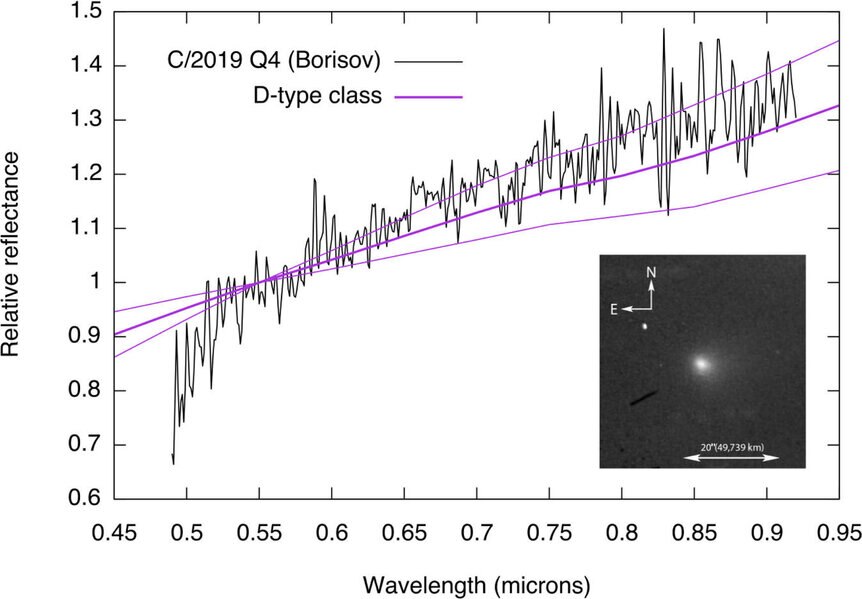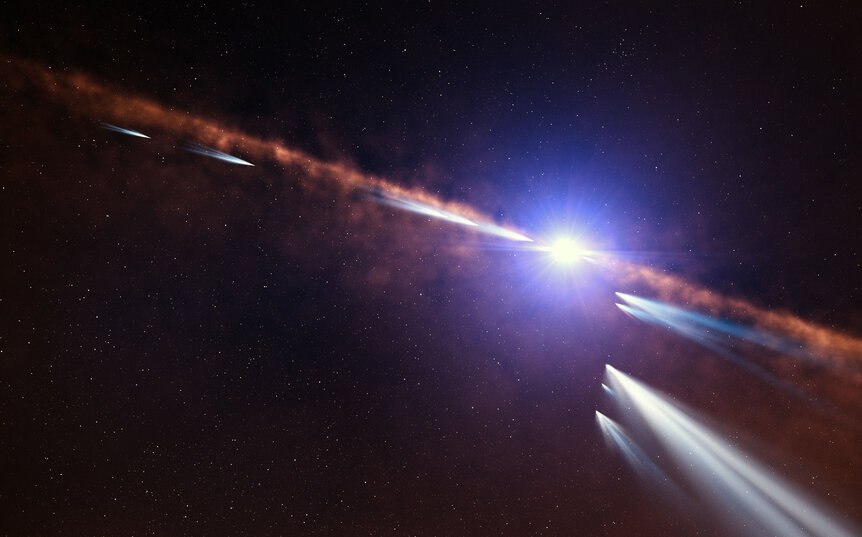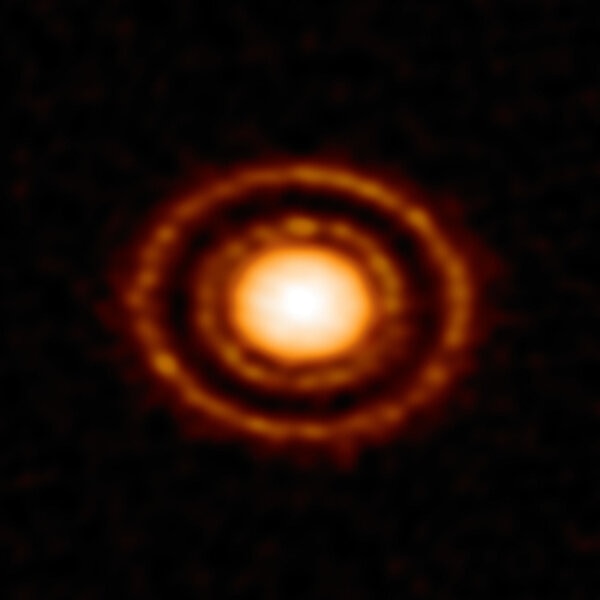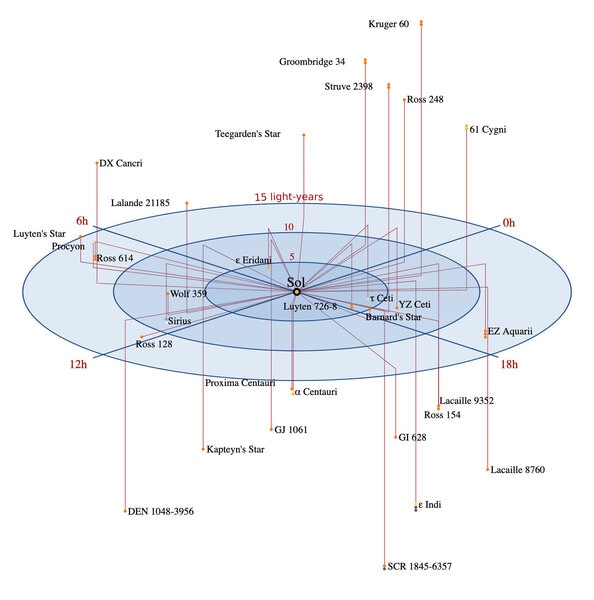Create a free profile to get unlimited access to exclusive videos, sweepstakes, and more!
Updates on an alien visitor: The interstellar comet 2I/Borisov
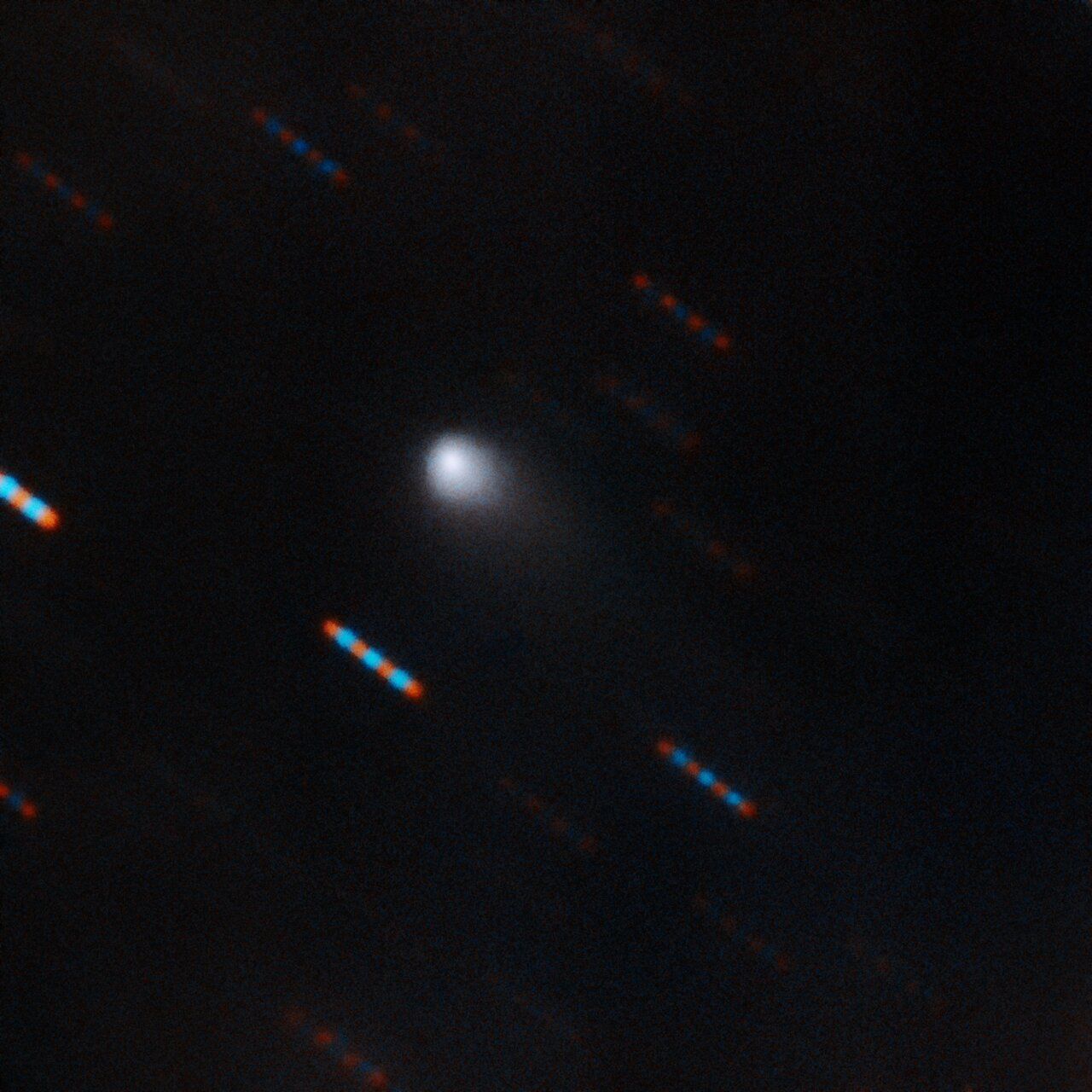
As I wrote on the blog a couple of weeks ago, our solar system is welcoming its second known interstellar visitor: A comet from another star. We know it's interstellar because it's screaming into the solar system at tremendous speed, far too high a velocity for the Sun to hold onto it. It must have come from another star.
Unlike 'Oumuamua, the first known object from interstellar space to pass through the inner solar system, we caught this one on its way in, so we lots of time to observe and study it. That means there will be plenty of news about it as more information is gleaned from it.
Aprops of that, here are some updates just since it was discovered on August 30, 2019.
Update the First:
As I mentioned at the bottom of my original post, this new visitor was bound to get renamed pretty quickly, given an official designation. It's a comet for sure — observations show it's surrounded by a cloud of gas, created as the Sun warms ice on it — so it was originally called C/2019 Q4 (Borisov), meaning it's a comet discovered by an astronomer named Borisov (an amateur, I'll note, who built his own telescope!) in 2019. The Q4 is an indication of when in the year it was found (that's a bit complicated, but I explain that all here).
It is now officially called 2I/Borisov, for the second interstellar object ever seen (the first being 1I/'Oumuamua).
Incidentally, the observations I mentioned above were taken using a mammoth 10-meter telescope, and also show that the comet's spectrum is pretty much the same as what you'd expect from a local artisanal comet. Another paper just published shows it's emitting hydrogen cyanide (HCN), a very common molecule in comets. It's blowing off about 100 grams of it per second, which is pretty typical for comets at this distance from the Sun.
So while it's an alien comet for sure, it's also (oxymoronically) surprisingly mundane. I was hoping it would be loaded with exotic materials like trinium or naquadah, but no such luck. On the other hand, we think the rest of the Universe is made of the same stuff we are, so it's no surprise the comet looks so familiar.
On the third hand, though, 'Oumuamua really is pretty weird, and we're still not sure why. So who knows. I doubt it's Go'a'uld, at least.
Update the Second:
When 'Oumuamua showed up, astronomers wondered why it had taken us so long to see any interstellar objects plunging through our neighborhood. It's suspected space is littered with them, but before we saw the first it was all speculation (based on physics and math, but still a lot of guesswork went into the initial variables). How often should we really see things like these?
Even after it has passed, it's hard to pin down numbers with just one sample. However, with Borisov screaming by, that helps a lot. We still can't completely nail down a rate, but it would help if, theoretically, we could figure where they come from. That would narrow down the possibilities of how they get here.
We think the easiest way these objects get flung out into the galaxy is if they form with planets and stars, just like any other comet, and then have a close encounter with a massive planet in that system. The gravity of the planet can then eject it into interstellar space.
The problem with this idea is that the planets we're seeing around other stars would have a hard time doing this, because those planets tend to be close in to their stars, while comets form farther out. You'd still get some ejections — after all, some comets get close to Jupiter here in our solar system, and can get shot away — but not as many if planets formed farther out from their stars. To even see a couple of interstellar comets in a short time, there must be a population of planets farther from their stars that's harder to detect (which we kinda suspected already; our methods of finding planets aren't that sensitive to finding worlds at larger distances from their stars).
So a pair of astronomers took a look at stars that are still forming planets from huge disks of gas and dust surrounding them. These very young disks have gaps in them where massive planets are likely forming, many pretty far out from the host star. They looked at the results from a survey of such systems called DSHARP to see how many planets they have, what masses they are, and how often they are likely to shoot smaller comets out of their system.
That gave them a number of objects passing us, but will we actually see them? To figure that out they looked at an upcoming huge survey telescope, the Large Synoptic Survey Telescope. This will scan the skies, and we know how much area of the sky it will cover and how faint an object it will see. So, combining these two things, they were able to figure out how often we should see more objects like 'Oumuamua and Borisov.
The numbers they got were astonishing: They expect to see a few 'Oumuamua-sized objects (150 meters or so) every year, but hundreds of such objects bigger than a couple of meters across.
Wow! I'll note that the European Space Agency is creating a new mission called the Comet Interceptor, designed to rendezvous with a fast-moving interstellar comet, or perhaps a comet from our own system that happens to be dropping into the inner solar system for the first time. It'll launch to the L2 point, about 1.5 million kilometers from the Earth away from the Sun, which is a gravitational stable spot. It can hang there until a good target is found, and then it'll use its own propulsion system to zip out and catch up. This is an extremely cool mission, and if the astronomers here are right, there'll be plenty of targets to choose from!
Update the Third:
So if Borisov formed around some other star, which star was it? Tracing the orbit of the comet back in the sky, we know it came from the direction of the constellation Cepheus. We can do better than that, though.
Some astronomers calculated the orbit of Borisov the best they could, tracing it backwards in space… and time, too. After all, it takes tens of thousands of years, even more, to cross interstellar space, and stars move over that kind of time. So they looked to see if any stars near the Sun were close to where the comet was in the past… and they got a hit. Kinda.
The binary star Kruger 60 is a pair of red dwarfs just 13 light years away. They found that the comet passed about 5.6 light years from the pair about a million years ago. They then say that Kruger 60 is “a plausible source” for the comet.
“Plausible” maybe, but by no means certain. My biggest concern here is that 5.6 light years is a long way. We know comets can form pretty far from stars, and we think our own cloud of comets surrounding the Sun (called the Oort cloud) may stretch out a trillion kilometers or more. But a light year is 10 trillion kilometers, so if the comet came form Kruger 60 it would have to have its own Oort cloud that's 50 times larger than ours. Mind you, both stars combined in Kruger 60 aren't even half as massive as the Sun. So a cloud that big is unlikely, to say the least.
They do show that the comet's speed relative to Kruger 60 in space is low, as you would expect from a comet ejected from there (most of the speed of the comet passing by us comes from the stars themselves moving through space, approaching us at about 30 km/sec). But even if that were the case, I don't think it can overcome the issue of it starting so far out from those stars.
The big caveat here is that there's some uncertainty in tracing a comet's orbit backwards, and as we get better observations that should become more accurate. It's entirely possible that when the orbit's refined, we'll see it came from much closer to those stars. But, to be fair, it could get farther away, too.
So while this is an intriguing result, I think it's too soon to say one way or another. As time goes on, and more observations are made, well be able to nail the path of the comet down better and hopefully have a better idea where it came from.
[My thanks to Luke Dones for tweeting about this paper!]
So in conclusion — and stop me if you've heard something like this before — there's a lot we know here, and a lot we don't. More observations will help tremendously… and happily that will most definitely happen, as the comet is still on approach, giving us months to observe it and see if we can uncover its secrets.
